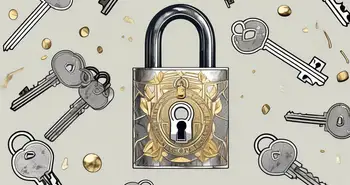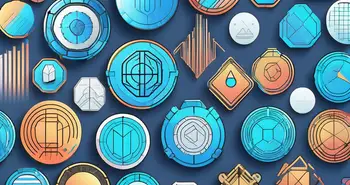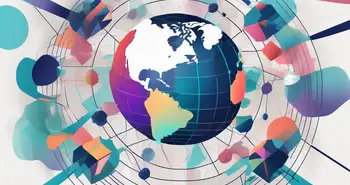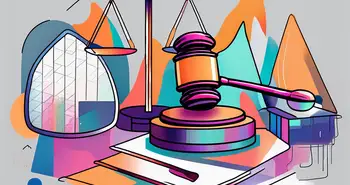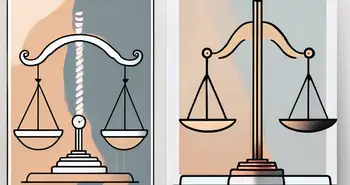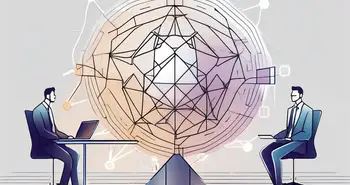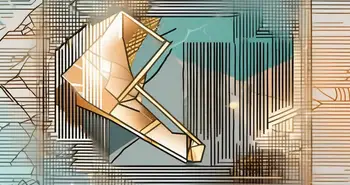How to Make Money from NFT: A Comprehensive Guide
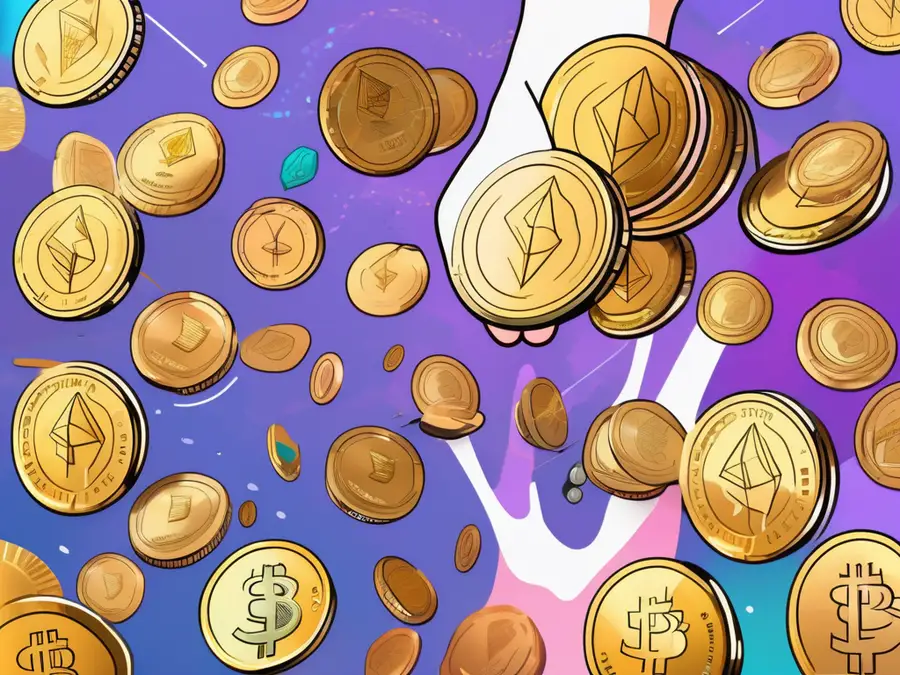
In recent years, the world of digital art has been revolutionized by the emergence of NFTs. Non-fungible tokens, or NFTs for short, have taken the art and collectibles market by storm, offering a new way for artists, creators, and investors to make money. If you're intrigued by this innovative space and want to know how to capitalize on it, you've come to the right place.
Understanding the Basics of NFTs
In recent years, the world of digital art and collectibles has been revolutionized by the emergence of Non-Fungible Tokens (NFTs). These unique digital assets have gained immense popularity and have sparked conversations about the future of ownership and authenticity in the digital realm.
What is an NFT?
An NFT, short for Non-Fungible Token, is a one-of-a-kind digital asset that represents ownership or proof of authenticity of a digital item. This can include a wide range of digital creations, such as art, music, videos, virtual real estate, and even virtual pets. Unlike cryptocurrencies like Bitcoin or Ethereum, which are fungible and can be exchanged for one another, NFTs are indivisible and cannot be replicated or replaced.
Imagine owning a digital painting that is unique and cannot be duplicated. This is what NFTs offer – a way to claim ownership of a specific digital item in a world where everything can be easily copied and shared.
How Do NFTs Work?
NFTs are powered by blockchain technology, which ensures the ownership and provenance of the digital asset. Each NFT is assigned a unique digital signature, which is stored on the blockchain and can be verified by anyone. This creates a transparent and immutable record of ownership, allowing artists to sell their digital creations and buyers to prove their ownership.
When an artist creates an NFT, they mint it onto a blockchain platform, such as Ethereum. This process involves creating a smart contract, which includes the details of the digital item and the terms of ownership. Once minted, the NFT can be bought, sold, and traded on various online marketplaces.
For collectors and enthusiasts, owning an NFT goes beyond simply having a digital file. It represents a connection to the artist and their work, as well as a piece of digital history that can be passed down through generations.
The Role of Blockchain in NFTs
The blockchain serves as a decentralized ledger that keeps track of all NFT transactions. It eliminates the need for intermediaries, such as galleries or auction houses, and enables direct peer-to-peer transactions. This decentralized nature ensures that ownership records are secure and cannot be tampered with.
Blockchain technology provides transparency and security, addressing the long-standing challenges of provenance and ownership in the digital art world. It allows artists to retain control over their creations and receive royalties whenever their NFTs are resold. This has opened up new opportunities for artists to monetize their work and reach a global audience without relying on traditional gatekeepers.
Moreover, the blockchain's transparency enables collectors and buyers to verify the authenticity and ownership of an NFT before making a purchase. This level of trust and transparency has made NFTs an appealing investment opportunity for many, as they can be seen as a digital form of rare and valuable collectibles.
As the world continues to embrace digital innovation, NFTs have emerged as a fascinating intersection of art, technology, and ownership. They have sparked conversations about the value of digital creations and the future of the art market. Whether you are an artist, collector, or simply curious about this new digital frontier, exploring the world of NFTs can be an exciting and thought-provoking journey.
The Market for NFTs
The market for non-fungible tokens (NFTs) has experienced explosive growth in recent years, revolutionizing the way we perceive and trade digital assets. NFTs have provided digital artists with a platform to gain significant recognition and monetize their creations, while collectors are eagerly hunting for rare and valuable NFTs to add to their portfolios.
One of the key trends in the NFT market is the emergence of collaborations between artists and brands. This partnership allows artists to reach a wider audience and tap into the brand's existing customer base. These collaborations often result in limited-edition NFT releases, which further increase the desirability and value of these digital assets.
Another trend that has gained traction in the NFT market is the rise of virtual art galleries. These digital spaces provide a platform for artists to showcase their work in a visually immersive and interactive environment. Collectors can explore these virtual galleries, admire the artwork, and even purchase NFTs directly from the artists or galleries.
Furthermore, the integration of NFTs into gaming and virtual reality environments has opened up new avenues for both artists and collectors. Virtual worlds and games now offer opportunities for artists to create unique in-game assets and sell them as NFTs. Collectors, on the other hand, can acquire these digital assets and use them within the virtual realms, adding a new layer of excitement and utility to their NFT investments.
The Most Profitable NFTs
While the value of NFTs can vary greatly depending on factors such as the artist's reputation, scarcity, and demand, certain categories have consistently performed well in the market.
Digital art has emerged as one of the most profitable categories within the NFT market. Artists are pushing the boundaries of creativity, experimenting with new mediums, and leveraging blockchain technology to authenticate and sell their digital artwork as unique NFTs. This has created a vibrant market where collectors are willing to pay significant sums to own these one-of-a-kind pieces.
In addition to digital art, virtual real estate has also become a lucrative sector within the NFT market. Virtual worlds and metaverses offer individuals the opportunity to own and trade virtual land, buildings, and other assets. As these virtual environments gain popularity, the demand for virtual real estate has soared, with some investors seeing substantial returns on their NFT property investments.
Collectibles have always held a special place in the hearts of enthusiasts, and NFTs have breathed new life into this market. From virtual trading cards to limited-edition collectible items, NFTs have created a digital playground for collectors to indulge in their passion. The scarcity and uniqueness of these digital collectibles make them highly sought after, driving up their value in the market.
Another promising category within the NFT market is music royalties. Musicians and artists can tokenize their music and sell ownership shares through NFTs. This innovative approach allows fans and investors to participate in the success of their favorite artists by owning a piece of their music royalties. As the music industry continues to embrace NFTs, this sector is expected to grow and provide new opportunities for both artists and investors.
It's important to note that the NFT market is still evolving, and new opportunities may arise as the technology matures. As more industries and sectors explore the potential of NFTs, we can expect to see innovative use cases and exciting developments that will shape the future of this market.
Risks and Challenges in the NFT Market
While the NFT market presents exciting opportunities, it's essential to be aware of the risks and challenges associated with investing in this space.
Firstly, the market for NFTs can be highly volatile. The value of NFTs can fluctuate dramatically, influenced by factors such as market trends, celebrity endorsements, and the overall sentiment towards digital assets. It's crucial for investors to carefully evaluate the market conditions and make informed decisions to mitigate potential risks.
Additionally, the nascent nature of the NFT market has attracted fraudulent activities and scams. Some individuals have attempted to sell counterfeit or unauthorized NFTs, deceiving unsuspecting buyers. To protect themselves, investors should conduct thorough research, verify the authenticity of the NFTs and the reputation of the platforms or artists they are dealing with. Trustworthy and reputable platforms play a crucial role in ensuring a safe and transparent marketplace for NFT transactions.
Furthermore, the environmental impact of NFTs has been a subject of concern. The energy consumption associated with blockchain technology, particularly in the case of proof-of-work blockchains, has raised questions about the sustainability of NFTs. As the industry evolves, efforts are being made to explore more eco-friendly alternatives, such as utilizing proof-of-stake blockchains or implementing carbon offset initiatives.
As the NFT market continues to mature, it is essential for investors and participants to stay informed, adapt to changing dynamics, and approach this innovative space with caution and due diligence.
Creating Your Own NFTs
Choosing the Right Platform for Creation
When it comes to creating your own NFTs, choosing the right platform is crucial. Look for platforms that offer a user-friendly interface, a wide reach within the NFT community, and low fees. Some popular options include OpenSea, Rarible, and SuperRare.
The Process of Minting NFTs
The process of minting an NFT involves converting your digital artwork or creation into a unique token on the blockchain. Most platforms provide step-by-step instructions on how to mint your NFT, including uploading your digital file, adding metadata, and setting a price or royalty percentage.
Pricing Your NFTs
Determining the right price for your NFT is a crucial step in maximizing your earnings. Factors to consider include the perceived value of your artwork, the current market trends, and the demand for your work. Experimentation and learning from the feedback of the community can help you find the optimal pricing strategy.
Buying and Selling NFTs
How to Buy NFTs
Buying NFTs is a straightforward process, but it's essential to approach it with caution. Research the artist, verify the authenticity of the NFT, and consider the long-term potential before making a purchase. Metamask, a digital wallet that connects to NFT platforms, is commonly used to facilitate transactions.
How to Sell NFTs
Selling your NFTs can be a rewarding experience if done right. Promoting your work through social media, participating in online communities, and pricing your NFTs competitively can increase your chances of finding buyers. Consignment sales through established galleries or platforms can also help showcase your work to a wider audience.
Tips for Successful Trading
To succeed as an NFT trader, it's essential to stay informed about the latest trends and developments in the market. Engage with the NFT community, follow influential artists and collectors, and be ready to adapt to changing market dynamics. Developing a discerning eye for valuable NFTs and recognizing emerging talent can also give you an edge in trading.
As an expert in the NFT space, I've witnessed its rapid evolution and the incredible opportunities it presents. One piece of advice I would offer is to diversify your NFT portfolio. Explore different categories, support emerging artists, and stay curious. The NFT landscape is constantly evolving, and being open to new possibilities can lead to exciting discoveries.
FAQs: Making Money from NFTs
What are the benefits of investing in NFTs?
Investing in NFTs allows you to support artists directly, own unique digital assets, and potentially profit from their appreciation in value. It's an opportunity to be part of a growing cultural movement and an emerging asset class.
Are NFTs a safe investment?
While NFTs offer exciting opportunities for investment, it's essential to approach them with caution. Conduct thorough research, invest only what you can afford to lose, and be mindful of the risks associated with the market's volatility.
How do I determine the value of an NFT?
The value of an NFT depends on various factors, including the artist's reputation, the rarity of the piece, and the demand from collectors. Research recent sales in a similar category and consult with experts or the NFT community to better gauge the value of your NFTs.
What are some upcoming trends in the NFT market?
The NFT market is constantly evolving, and new trends are emerging. Keep an eye out for developments in virtual reality and augmented reality experiences, the integration of NFTs into gaming platforms, and the increasing adoption of NFTs by mainstream brands and celebrities.
By understanding the basics, keeping up with market trends, and exploring your creativity, you can unlock the potential of NFTs to make money and participate in a digital revolution.
Ready to dive into the world of NFTs and harness the potential of blockchain technology in your investments? Look no further than Morpher, the revolutionary trading platform that offers zero fees, infinite liquidity, and a unique trading experience across a variety of asset classes, including NFTs. With Morpher, you can start trading with as little as $1, take advantage of up to 10x leverage, and enjoy the safety of a non-custodial wallet. Embrace the future of investing and Sign Up and Get Your Free Sign Up Bonus today to transform the way you trade and make the most out of the digital revolution.

Disclaimer: All investments involve risk, and the past performance of a security, industry, sector, market, financial product, trading strategy, or individual’s trading does not guarantee future results or returns. Investors are fully responsible for any investment decisions they make. Such decisions should be based solely on an evaluation of their financial circumstances, investment objectives, risk tolerance, and liquidity needs. This post does not constitute investment advice.

Painless trading for everyone
Hundreds of markets all in one place - Apple, Bitcoin, Gold, Watches, NFTs, Sneakers and so much more.

Painless trading for everyone
Hundreds of markets all in one place - Apple, Bitcoin, Gold, Watches, NFTs, Sneakers and so much more.

